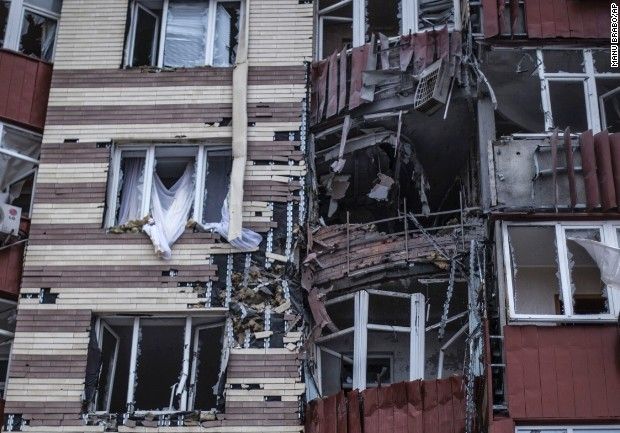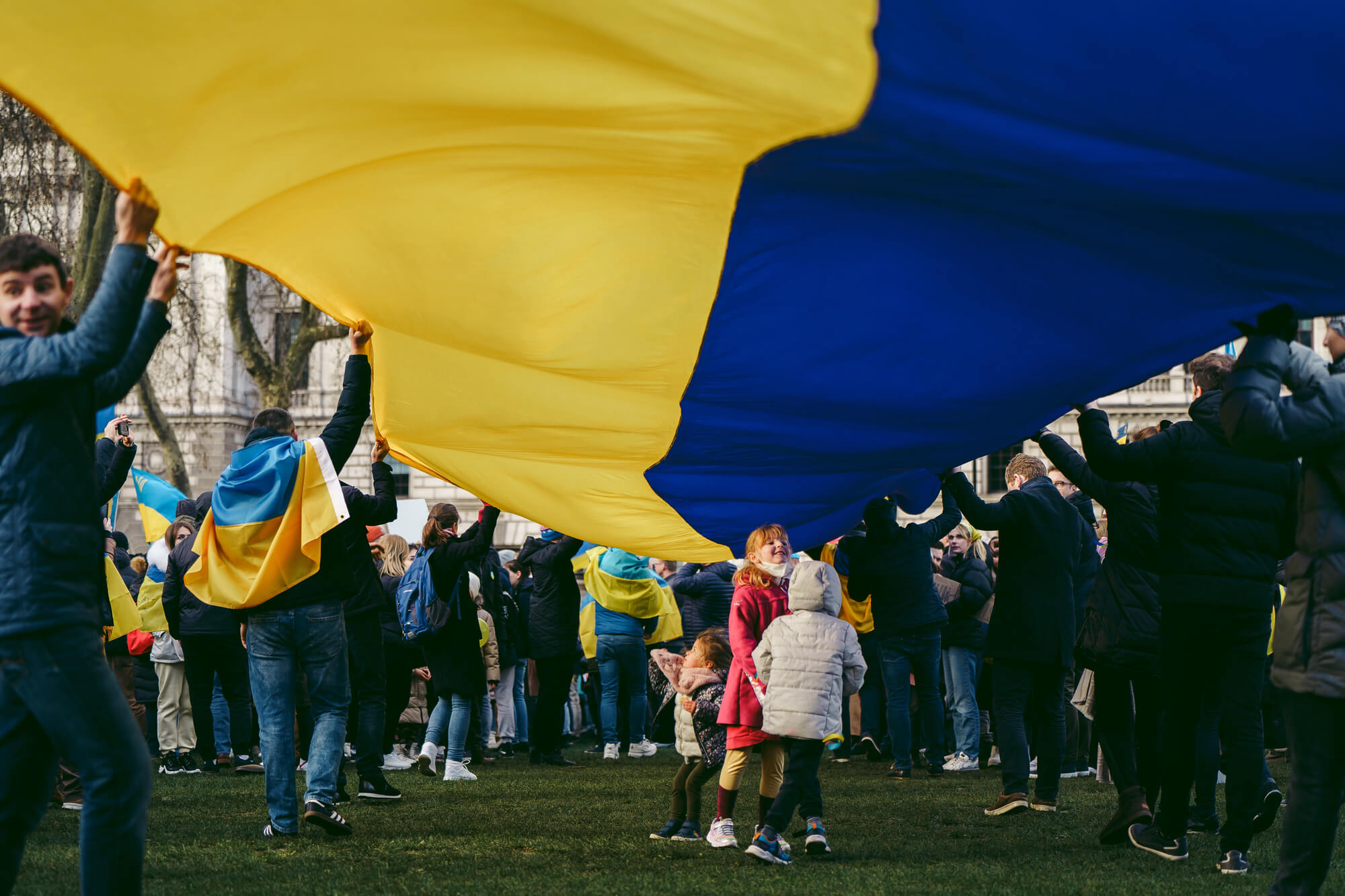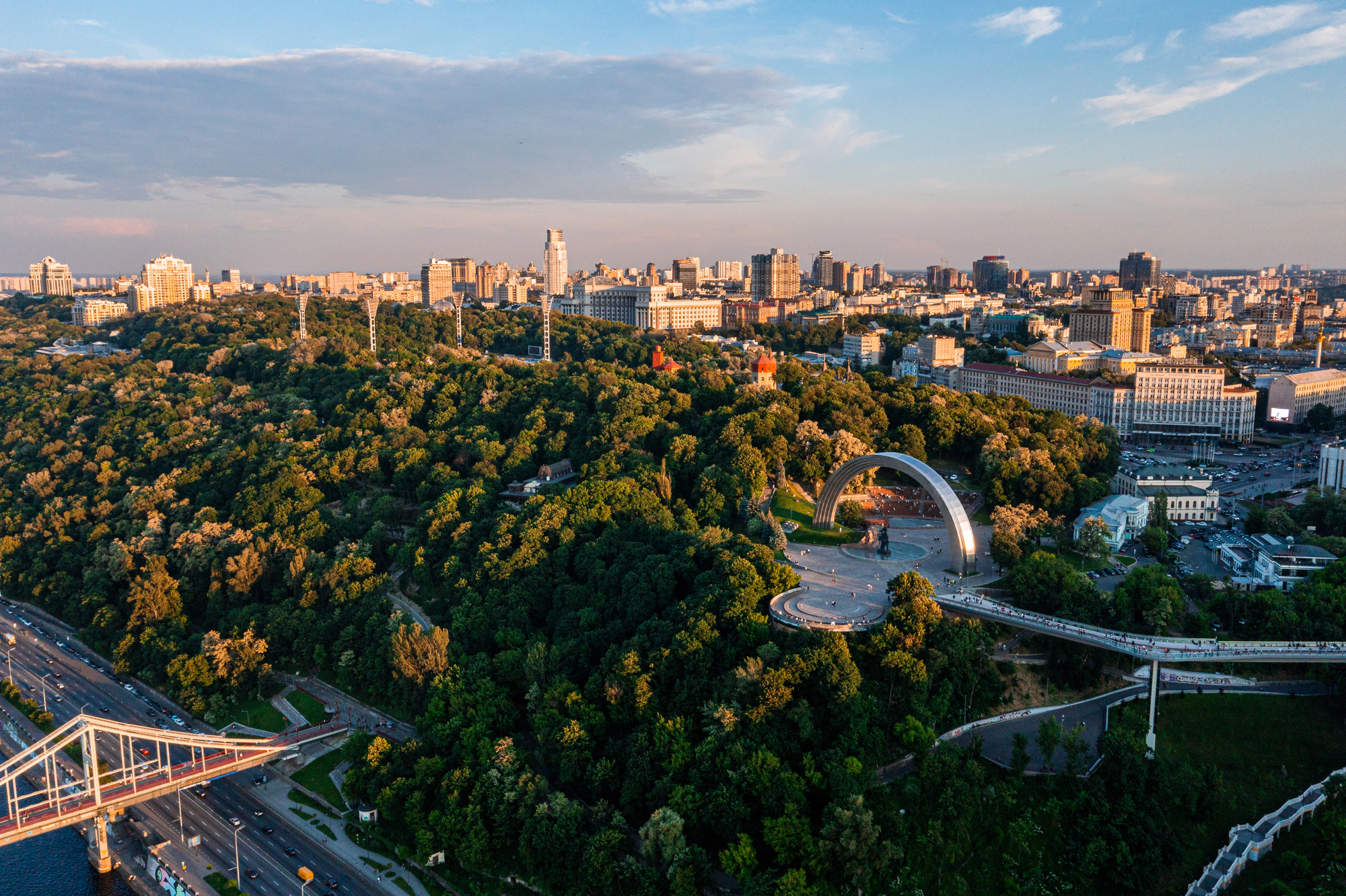On April 15, 2014 it launched the ‘anti-terrorist operation’ (ATO) and ordered its military to re-take control over Donbas region. Almost ten months later the results are clear: an increased presence of Russian troops and military equipment in Donbas; more than 6000 people dead, including 2000 Ukrainian troops (which many suspect is an underreported figure); more than 1 million internally displaced and refugees. Ukraine should reconsider strategies to counter pro-Russian rebels in Ukraine and Putin’s Russia itself.
Perils of Armed Struggle
Ukraine had already given war a chance. On April 15, 2014 it launched the ‘anti-terrorist operation’ (ATO) and ordered its military to re-take control over Donbas region. Almost ten months later the results are clear: an increased presence of Russian troops and military equipment in Donbas; more than 6000 people dead, including 2000 Ukrainian troops (which many suspect is an underreported figure); more than 1 million internally displaced and refugees; Ukrainian cities in other regions are hardly any safer as the ATO proponents expected. Terrorist acts have been on the rise, with bomb threats and bomb explosions in Odessa, Kherson, Kharkiv, Dnipropetrovsk, and Kyiv to name a few.
The military strategies to retake Donbas and establish the Ukrainian control over the region have ended in failure. These strategies should have never been considered realistic in the first place. Ukrainian military campaign is driven by a revolutionary naiveté and heightened patriotism instead of a rational, cost-benefit calculus of waging a conventional war against enemy backed up by a militarily superior adversary. The Ukrainian elites, who have never considered worst-case scenarios, should acknowledge two basic facts. First, no kind and quantity of Western military support will be able to match what Russia has already deployed and is prepared to deploy to Donbas. Second, Ukraine fights this war alone.
Once these two facts are admitted, Ukraine should reconsider strategies to counter pro-Russian rebels in Ukraine and Putin’s Russia itself. Such strategies must be based on a realistic assessment of the costs, risks and possibilities that arise from a protracted (at least a ten-year long) struggle. The result of such an assessment most likely would be a decision to change entirely the struggle paradigm. Ukraine’s main goal should be not to regain or even keep territory of Donbas but to limit civilian and military deaths, reduce displacement and minimize destruction of settlements. Ukraine should engage violent adversary on a different, civilian-led battlefield – using predominantly nonmilitary means – where Ukrainians would hold advantage over its opponent.
By opting for the military approach Ukraine had significantly limited human resources and civic mobilization capacities, especially in the light of recent reports on increase in draft dodging. Approximately 250,000 active duty Ukrainian military personnel, several thousands of paramilitary forces and civilian volunteers – at best, 300,000 people – might be engaged directly or indirectly in the armed struggle. This constitutes not even 1% of the Ukrainian adult population (15 years and older). Therefore, the first and foremost strategy for Ukraine must be to devise the type of resistance that asks and enable all 40 million people to take part in it, and do so on a daily basis.
Ukraine had already given its military and pro-military establishment 10 months to prove that they were capable to defeat the adversary. They were neither able to achieve military victory nor stop advances of the other side. It is now time to opt for a different strategy during the equivalent period. This strategy would engage the population in various civilian-led, resistance campaigns at different locations.
Nonviolent Civilian-led Defense and Resistance
Historically, it had been nonviolent civilian defense/resistance that could turn a whole community into a fighting society of millions: the unarmed struggle is able to limit costs and risks for civilians, expand civic networks, solidarity and mutual-aid institutions. At the same time, it imposes more significant political, economic and social burden on the stronger adversary than the arms resistance would ever be able to do. This was the case with the Danish and Norwegian resistance against the Nazis, the Czechoslovakian and Polish nonviolent struggles against the Soviets and their domestic proxies, or the East Timorese resistance against Indonesia. A recently published study Nonviolent Civilian Defense to Counter Russian Hybrid Warfare offers more detailed analysis of nonviolent organizing and defense against foreign aggression.
The basic logic of unarmed struggle is to strengthen civic fabric and social solidarity of the country under attack – Ukraine (internal battlefield)- while undermining domestic support for the political elites of the attacking state – Russia (external battlefield).
For that to happen a number of military and nonmilitary moves need to be considered and take place almost simultaneously, including the following list.
Internal battlefield
1. Establishment of civil resistance or civilian defense councils across Ukraine.
Civilian defense councils should be founded in all Ukrainian administrative units, including Donbas region. They should be composed of state officials, civic organizations and activists, trade unions, representatives of professional associations from various areas of expertise: workers, doctors, nurses, lawyers, farmers, artists, media professionals, respected local figures. These bodies, would be responsible for devising and executing civilian-led actions and campaigns, building alternative media and means of communication , ensuring effective sharing of verified information among locals, engaging in popular disobedience. The latter may include total noncooperation and strikes in case of occupation of urban areas, as well as sabotage of daily work on the occupied territories. These councils should also develop sophisticated underground or open networks of volunteers ready for humanitarian deployment that are disciplined, trained and resourceful in providing social, economic and psychological assistance to local civilians. The Coalition of Patriotic Forces of Donbas that consists of 15 NGOs from Donetsk and Luhansk regions have already began working on the new political strategies to wage a different type of struggle with the Russian regime and its proxies in Donbas. These efforts should be supported and expanded.
2. Ukrainian government could develop and release civil resistance manual that would be disseminated to all its citizens in print and online.
This manual should describe new methods of civilian-led, unarmed resistance, a logic and necessity behind them and examples of how ordinary Ukrainians could contribute and carry nonviolent resistance actions on a daily basis. Similar practice has already been introduced in January 2015 by the Lithuanian Ministry of Defense: Lithuanian manual outlines what citizens should do in case of foreign aggression. It expressly states that “citizens can resist aggression against their country not only through armed [struggle]. Civilian-based defense or nonviolent civil resistance is another way for citizens’ resistance against aggression. (…) This method is especially important for threats of hybrid war.” The manual presents a comprehensive list of civilian-led nonviolent actions and initiatives citizens can organize to undermine the power of the invading forces.
3. Ukrainian government should issue a declaration of unilateral withdrawal of all Ukrainian armed forces from Donbas to new defensive positions outside the region and unilateral cessation of all armed actions.
Although this is the most politically difficult move, it is necessary to create an opening for nonviolent resistance and civilian-led defense. The new course of action should be communicated, with thousands of video and photo images, and via all available information channels and social networks to the people of Donbas and Russia. In the absence of Ukrainian troops and volunteer battalions, any shooting or shelling would be indisputably attributed to rebels and the Russian troops. Russian citizens would also begin receiving alternative to their state propaganda information about the nonviolent conflict in Donbas. In contrast to the past events in Crimea, the Ukrainian government and civil society must be prepared to provide guidance to the local population on the best strategies of nonviolent resistance and noncooperation with new rebel authorities.
4. Ukraine should facilitate a serious legitimacy crisis in occupied territories.
Withdrawal of Ukraine’s troops from Donbas would leave rebels and Russian military in charge of running many towns and cities in the region. No longer threatened by shelling civilians would slowly regain space taken from them by war and begin asking rebels and Russian troops to deliver on their promised peace and prosperity. Running schools, hospitals and public services is not a strong suit of the armed men. It is likely, as it happened after the ceasefire in September 2014, that locals began demonstrating and voicing collectively their criticism of rebels and their ineffective governance.
5. Ukrainians should organize humanitarian aid to the residents of Donbas on a massive scale, publicizing their efforts in the Russian-language social media.
Winning true sympathy and building solidarity of people across borders would be the main objective of such campaigns. With an increasing success of the solidarity actions the Donbas population could be encouraged to engage in a low risk nonviolent resistance against occupying forces (e.g. refusal to cooperate with rebels, build alternative citizens-run mutual-aid associations independent of rebels-controlled formal government structures). Intensified media broadcast is intended to keep people in Russia informed about new solidarity atmosphere in the region and encourage Russians to resist their own corrupt and unaccountable political elites.
The building hit by Ukrainian artillery is seen in the Voroshilovsky area of Donetsk.
External battlefield
1. Ukrainian government should speed up the work on the “European rampart” – a heavily fortified, new demarcation line on the border between Donbas and adjacent regions of Ukraine as well as border with Russia and Transnistria.
The Ukrainian government could request the EU and the US to dispatch hundreds-strong military engineer corps, finance the work of the construction companies, as well as provide heavy machinery and equipment to finalize the work on the rampart by the summer 2015. Such requests for aid would help to unify Ukraine’s Western allies that were divided on the issue of weapons delivery.
2. The Ukrainian government should intensify its diplomatic outreach in the UN and Western capitals to deploy a 20,000 strong peacekeeping contingent to the country.
Well-armed peacekeepers should be stationed on the 20-30 kilometer wide buffer zone separating Ukraine’s fortified rampart and the rest of Donbas. If needed Ukraine could ask its Western allies in the UN to use the United for Peace resolution to override Russia’s veto in the same way the UN did when it deployed armed peacekeepers to Korea and elsewhere.
3. Ukraine would aim to unify international community and the Western countries around the support for its civilian-led nonviolent defense and build an overwhelming global consensus.
The main emphasis should be made on the fact that Russian attacks are conducted against the society that is clearly engaged in nonviolent resistance actions. This policy is more likely than an armed struggle to trigger massive economic and financial sanctions on Russia that go well beyond the Iranian-type of sanctions.
4. A new nonviolent resistance front should be opened in the Crimea.
This action is intended to encourage and assist people to engage in civil disobedience, noncooperation, and deliberate inefficiencies actions on the peninsula. Ukrainians would be urged to organize and lead humanitarian and information campaigns directed toward Crimean residents.
5. Ukraine should deploy information and communication strategies to facilitate disobedience among Russian conscripts and Russian troops’ refusal to be stationed in Donbas.
With the help of the Russian activists and parents of prospective conscripts in Russia, the Ukrainian civil society could popularize simple messages: e.g. “if ordered to move to Rostov or other places near the Ukrainian border, ask your superiors for written orders that specify the place of deployment and reasons for it”, “record via electronic means how your superiors explain the reasons for your unit re-deployment to Donbas”, “make orders of deployment and reasons behind it public, including sending open letters to the Presidential Council on Civil Society and Human Rights of the Russian Federation, sharing the information with local media and on online social networks.”
6. The international advocacy for the release of Nadiya Savchenko should continue unabated.
Nadiya Savchenko, the Ukrainian pilot captured by rebels and taken illegally to Russia, is a true model of how to fight Putin’s regime. No military actions of the Ukrainian state have placed Putin in such a dilemma, mobilized such a large international and diplomatic solidarity and activized to such a degree both Ukrainians and Russians in support of her cause then Savchenko’s resilience and her ongoing hunger strike in prison.
Civilian-led nonviolent defense and resistance has greater chances of mobilizing millions of Ukrainians, giving them clear purpose and instruments that no armed resistance could ever offer them. Unarmed struggle would provide a unique opportunity to force Russian troops out of their comfort zone. A complete withdrawal of the Ukrainian military from Donbas could seriously overstretch rebel forces and Russian troops if they attempt to establish their control over the whole Donbas territory. Their supply and transportation lines would become more vulnerable to collective sabotage – be it road or railway blockages – by pro-Ukrainian sympathizers. Occupation of a vast territory is also costly. It could drain financial resources of the occupying forces even faster than the armed campaign, particularly if Kremlin-backed rebels would have to begin rebuilding and delivering services in order to win over locals or keep their loyalties. Meanwhile cessation of armed struggle would facilitate cooperation between the Ukrainian and Russian activists. This cooperation could, for example, take a form of a Gandhi-like peace march from Kyiv to Moscow. Ukrainians could trigger this action by releasing a barrage of thousands of appeal videos to the Russian society – like the one done by the Kyiv students a month ago. If carefully planned and organised “from the roots” by Ukrainian and Russian citizens, the march would corner Putin to face the dilemma: he may not arrest thousands of peaceful marchers, keep them in prisons, turning them into thousands of Savchenkos while the world, in unison, demand their release. This is just one of hundreds if not thousands of nonviolent actions that 40 million Ukrainians could plan and implement at the dawn of the new nonviolent warfare.
Notes
Dr. Maciej Bartkowski, expert in civil resistance and lecturer of strategic nonviolent conflict at Krieger School of Arts and Sciences, Johns Hopkins University. He is the book editor of Recovering Nonviolent History. Civil Resistance in Liberation Struggles and the author of Nonviolent Civilian Defense to Counter Russian Hybrid Warfare published by Johns Hopkins University.




